Chickens can form part of a healthy garden, where their primary purpose is to provide fresh eggs and pest control. Garden chickens have an insatiable appetite for slugs and grub, which they will consume all day. They also provide manure for the compost pile and can till the ground for you in preparation for planting.

But chickens can be mean and raising them can be exhausting, especially when you don’t have the right tools and materials for it.
Now if your current feeding system is causing you some issues (such as contamination, feeds all over the place, or critters getting to your chooks’ food) this DIY mess-free chicken feeder is what you need!
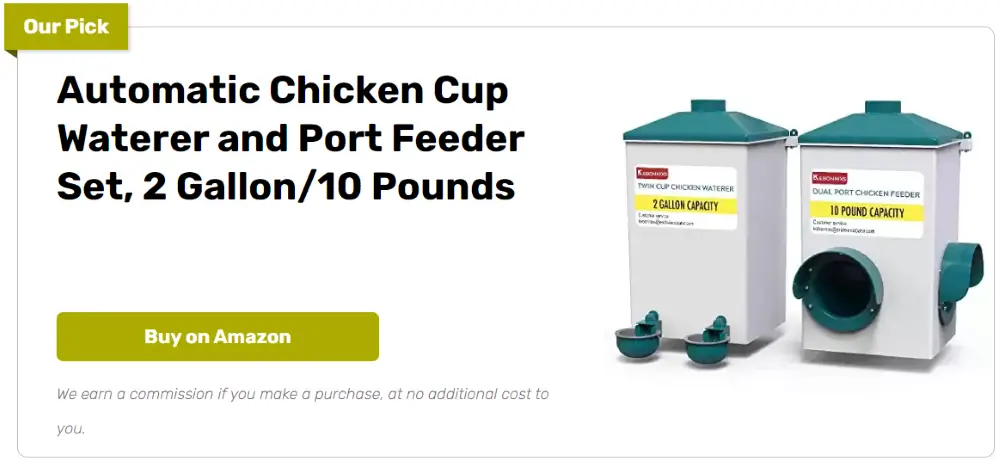
This DIY bucket chicken feeder prevents chooks from scattering their food everywhere. The feeds are contained in a covered bucket with holes just big enough for the chickens to access them. It prevents other animals from getting to your chicken feeds and it protects it from dirt or rain.
The bucket chicken feeder shown here is of medium size and can fit a maximum of three PVC elbows. If you’ve got more chooks in your homestead, you can use a 20L bucket and install six PVC elbows.
To make things even easier, you can also install a small vertical window on your DIY bucket chicken feeder so that you can see if it needs replenishing without having to take off the lid.
Is this the kind of chicken feeder you need in your backyard? Make one now by following this step-by-step tutorial from lonesoulsurfer!
Click on any image to start the lightbox display. Use your Esc key to close the lightbox. ?
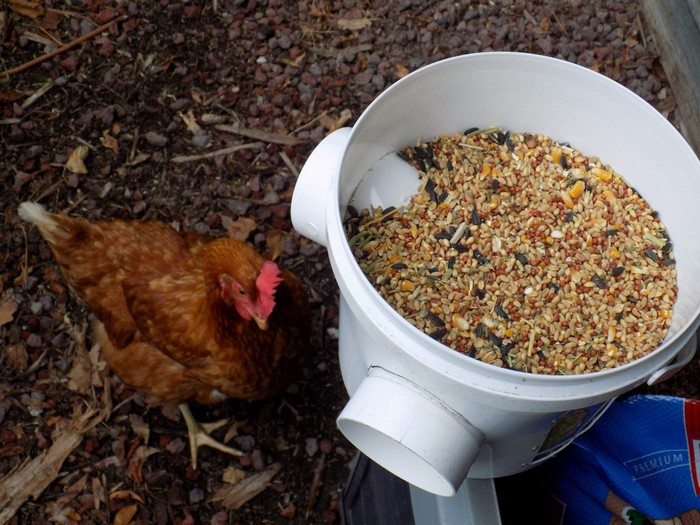

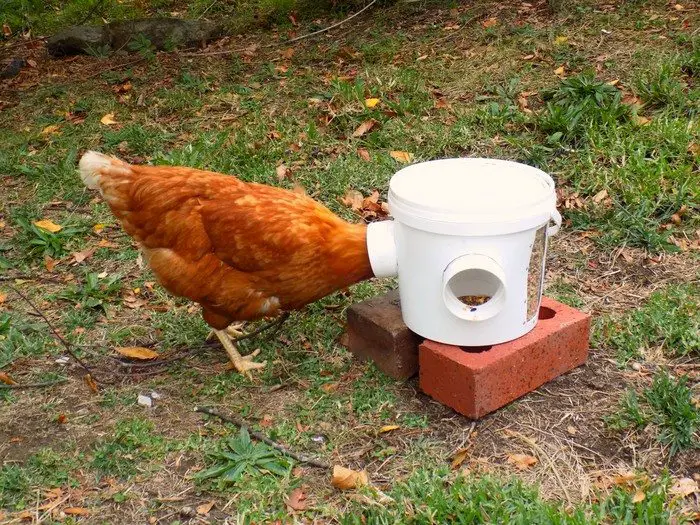


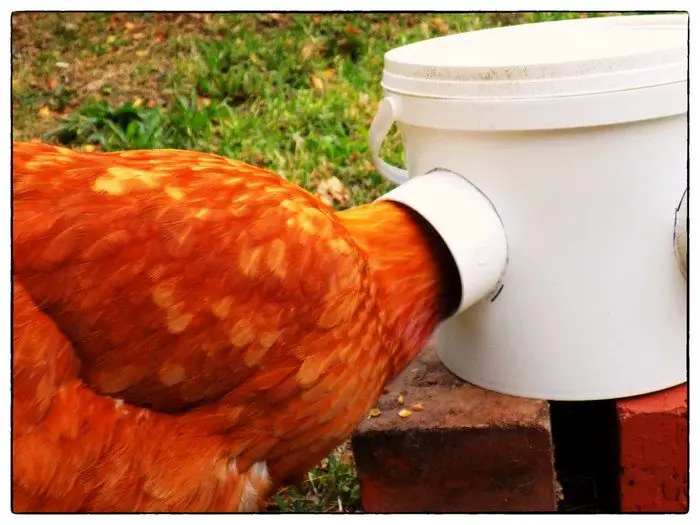
Contents
Building a Mess-Free Chicken Feeder
Materials
- Medium-sized Bucket
- 70mm PVC Elbows
- Hot Glue or Silicone
- Clear Plastic Sheet
- Rivets
Tools
- Permanent Marker and Ruler
- Knife
- 70mm Hole Saw
- Drill
- Rivet Gun
- Hot Glue Gun
Steps

Design: The size of the bucket for your mess-free chicken feeder will depend on how many chickens you have. The bucket I used holds enough feed for the girls for about 10 days. Once you have the bucket you want, you’ll then need to work out where to make the holes for the PVC elbows.
Mark the spot on where to make the hole in the bucket. You want the PVC elbow to be close to the bottom of the bucket but not touching it. Leave an allowance of about 15-20mm so it will be far enough from the bottom so the grain can get into the mouth of the PVC pipe.
Place the PVC pipe on the actual bucket and with a marker and trace around the edge to mark the size and placement of the pipe. If you imagine that the bucket is split into thirds, then each PVC elbow should be in one of each part – see drawing attached.
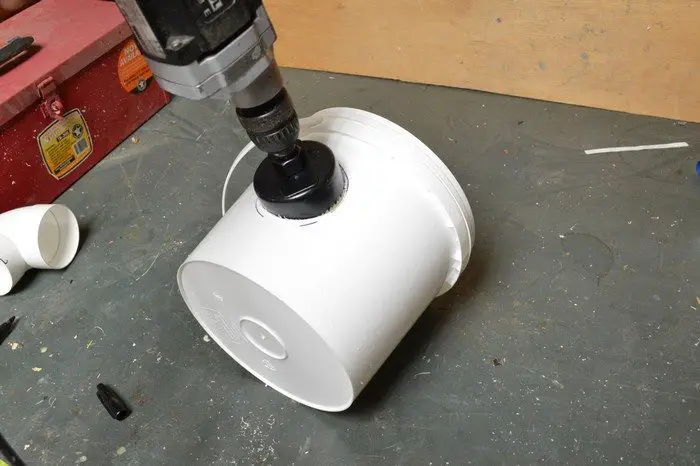
Making the holes: Find the middle of the circle you drew and drill out the sections using a 70mm hole saw.
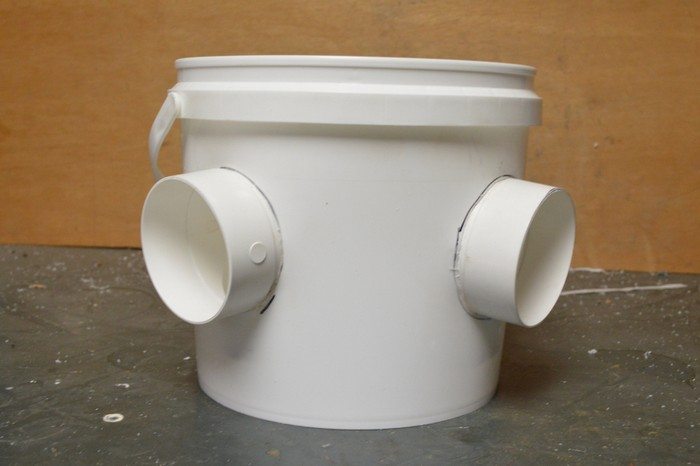
You may find that you need to make the hole a little larger to allow the elbow to fit through. If this is the case, use a file or sanding wheel and dermal to remove the rough edges of the plastic. You want the holes though to be a tight fit for the elbows. This way you won’t have to add any hot glue or silicone to seal any gaps.
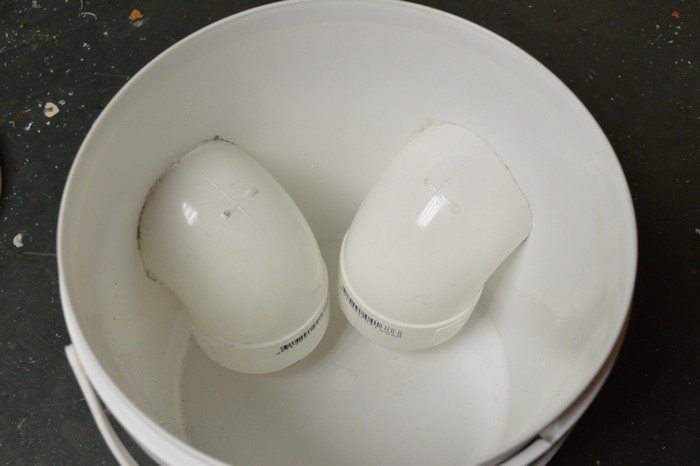
Once the holes are big enough, push the PVC elbow through and turn them face down.
Viewing window: The viewing window of your mess-free chicken feeder isn’t necessary. It does however lets you see how much grain is left without having to open the lid.

Mark the portion to remove with a marker. Carefully cut away the portion with a knife. Clean the edges if necessary.

Next, cut a clear piece of plastic so it completely covers the area removed. You will want to have the plastic a good 15mm larger on either side so you can attach it to the mess-free chicken feeder. I did try superglue first but this was a monumental failure. Hot glue might work as well but I decided to use rivets to secure it in place.
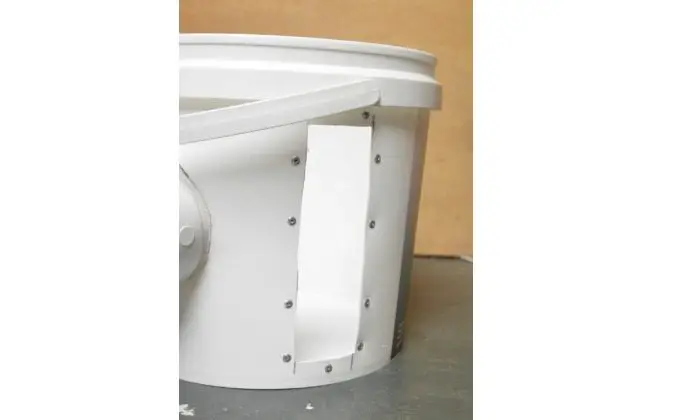
Drill holes around the edge of the viewing window and also into the clear plastic section. Attach with rivets of your mess-free chicken feeder.
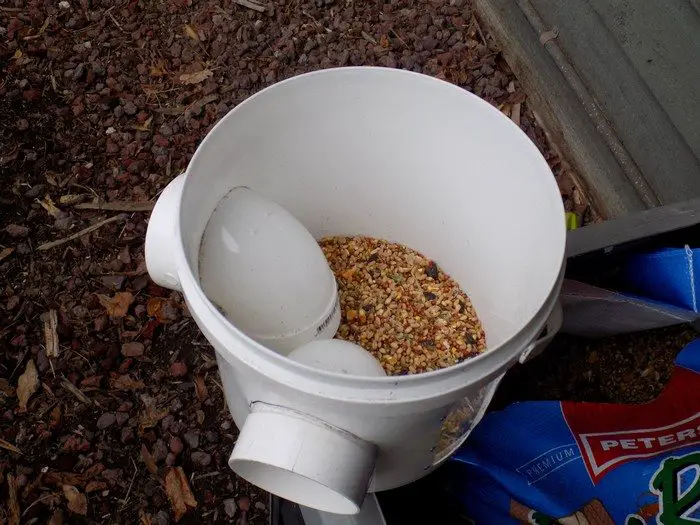
Fill it up: That’s pretty much it for your mess-free chicken feeder! Now it’s time to fill it up with grain and get the girls to use it. I placed mine on a couple of bricks so that they could easily reach the holes. To get them to look into the PVC elbows, I pulled some grain out and placed it on the mouth of the pipe. The girls are curious by nature so it didn’t take them a long time to figure out how it works.
This is a really simple way to feed your chickens. The best part is there’s hardly any mess as the feeds stay inside the bucket and not all over the place.
Thanks to lonesoulsurfer for this great mess-free chicken feeder project.
Benefits of Using a Mess-Free Chicken Feeder
Keeping chickens can be a rewarding experience, but managing their feeding can sometimes be a challenge. A mess-free chicken feeder offers an efficient solution to common feeding issues. Here are the key benefits of using a mess-free chicken feeder in your backyard or farm.
Reduces Waste and Saves Money
A mess-free chicken feeder minimizes the amount of feed that gets wasted. Traditional feeders often allow chickens to scatter food, leading to significant wastage. By containing the feed and providing controlled access, a mess-free chicken feeder ensures that every bit of feed is utilized efficiently. This reduction in waste translates to cost savings over time, as you will need to purchase feed less frequently.
Prevents Feed Contamination
Feed contamination is a common problem with open feeders. Dirt, rain, and droppings can easily mix with the feed, making it unhealthy for your chickens. A mess-free chicken feeder keeps the feed protected from external contaminants, ensuring that your chickens have access to clean, dry food at all times. This protection helps maintain the health and well-being of your flock.
Enhances Chicken Health
Using a mess-free chicken feeder can significantly improve the overall health of your chickens. By preventing feed contamination and reducing waste, the feeder ensures that chickens consume clean and fresh food. This consistency in diet helps in maintaining their digestive health and supports better egg production. Moreover, less scattered feed means fewer pests and rodents, reducing the risk of disease.
Simplifies Feeding Management
Managing feed can be time-consuming, especially if you have a large flock. A mess-free chicken feeder simplifies this task by reducing the frequency of refills and minimizing the cleanup required. The design of the feeder allows you to monitor feed levels easily, ensuring that your chickens always have access to food without constant supervision. This ease of management allows you to focus on other aspects of chicken care.
Keeps Feeding Area Clean
A clean feeding area is essential for maintaining the hygiene of your chicken coop. A mess-free chicken feeder helps in keeping the feeding area tidy by preventing spillage and scattering of feed. This cleanliness not only benefits the chickens but also makes the coop more pleasant to maintain. It reduces the time and effort required for cleaning, making your poultry-keeping experience more enjoyable.
A mess-free chicken feeder offers numerous benefits, including reduced waste, prevention of feed contamination, enhanced chicken health, simplified feeding management, and a cleaner feeding area. Investing in a mess-free chicken feeder can make a significant difference in the efficiency and effectiveness of your poultry care routine.
Maintenance Tips for Your Mess-Free Chicken Feeder
Maintaining your mess-free chicken feeder is essential for ensuring its longevity and effectiveness. Regular upkeep will keep the feeder in optimal condition, providing your chickens with clean and uncontaminated feed. Here are some maintenance tips to help you care for your mess-free chicken feeder.
Regular Cleaning
Keeping your mess-free chicken feeder clean is crucial. At least once a week, empty the feeder completely and wash it with warm, soapy water. Pay special attention to the PVC elbows and any crevices where feed residue might accumulate. Rinse thoroughly and allow the feeder to dry completely before refilling it with fresh feed.
Inspect for Wear and Tear
Regularly inspect your mess-free chicken feeder for any signs of wear and tear. Check the PVC elbows and bucket for cracks or damage that could affect the feeder’s functionality. If you notice any issues, repair or replace the damaged parts promptly to prevent further problems.
Check for Blockages
Sometimes feed clogs the PVC elbows over time, therefore stopping smooth flow. Look through the apertures occasionally for any obstructions. Clear any obstacles using a small brush or a piece of wire so that the feed may pass unhindered through the apertures.
Protect Against Moisture
Your chickens’ health may be compromised if moisture causes feed to deteriorate and mould. Make sure your mess-free chicken feeder is in a safe, dry space. Install a cover or lid to shield the feeder from dampness and rain wherever at least practicable. Replace the feed if needed after routinely looking for any indications of dampness.
Monitor Feed Levels
Maintaining a constant supply of food for your chickens depends on you closely monitoring the feed levels in your mess-free chicken feeder. Use the viewing window in your feeder to track feed levels without opening the lid. As necessary, empty the feeder to guarantee that your chickens always have fresh food at hand.
Secure the Feeder
Make sure that your mess-free chicken feeder is securely placed in the coop or run. This prevents it from tipping over and spilling the feed. Use bricks or other stable supports to elevate the feeder if necessary, making it easier for the chickens to reach the feed openings.
Routine Maintenance Schedule
Create a routine maintenance schedule for your mess-free chicken feeder. Regular tasks such as cleaning, inspecting for damage, and checking for blockages should be part of your weekly or bi-weekly routine. Consistency in maintenance will help keep the feeder in good working condition for a longer period.
By following these maintenance tips, you can ensure that your mess-free chicken feeder remains effective and reliable. Proper care and regular upkeep will not only extend the life of your feeder but also contribute to the health and well-being of your chickens.
Conclusion
Building a mess-free chicken feeder is a straightforward and rewarding project that enhances the efficiency of your poultry care. It ensures clean and uncontaminated feed, promoting the health of your chickens. With minimal maintenance, this feeder will provide lasting benefits and a tidy feeding area.
For more projects on keeping your livestock healthy, check out our chicken playground project!





